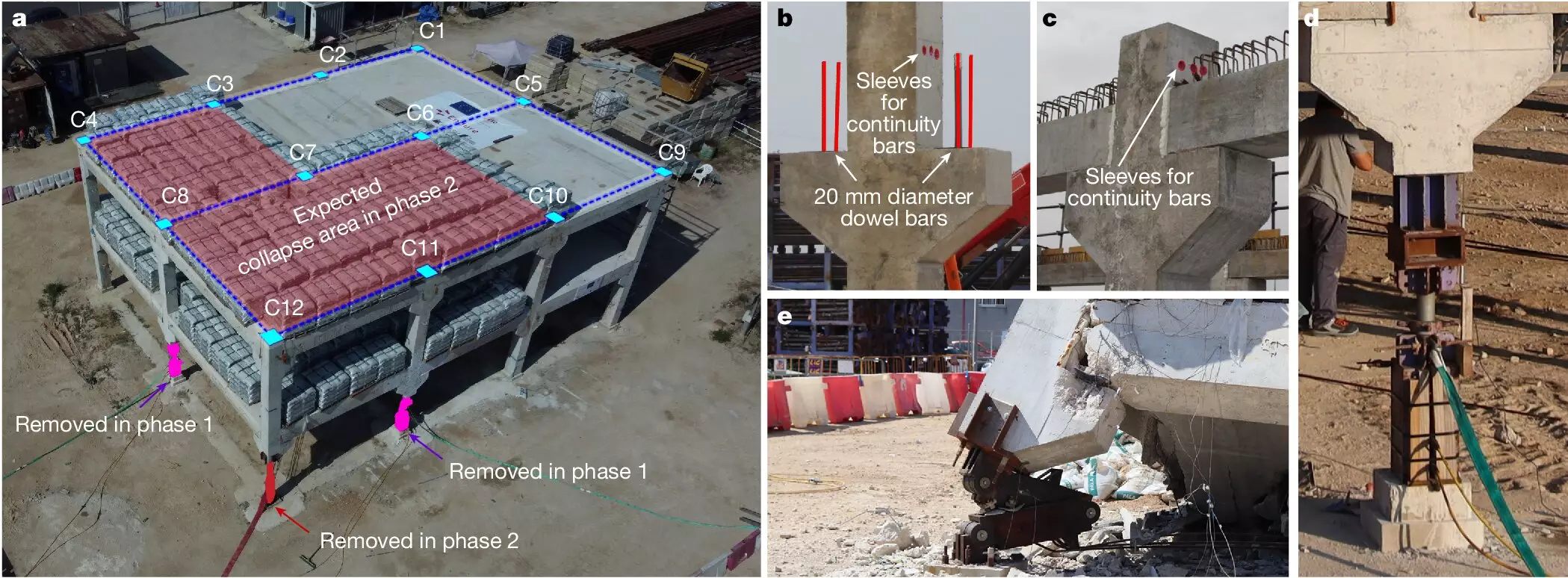The current building design methods focus on enhancing the connectivity between various components of a structure to distribute the loads efficiently in the event of component failure. However, this approach can lead to catastrophic collapses after large initial failures, as evident in incidents like the Champlain Towers collapse, a building collapse in Peñíscola in 2021, and in Abadan, Iran in 2022. To address this limitation, researchers at ICITECH-UPV have proposed a novel design method to prevent collapse propagation in buildings, ensuring structural resilience and safety.
The innovative approach developed by the ICITECH-UPV team revolves around the concept of a structural fuse, which aims to isolate damaged parts of a building to halt the spread of major failures throughout the entire structure. This principle is akin to safeguarding an electrical system from overloads using electrical fuses. By implementing this segmentation strategy, the building maintains structural continuity in normal conditions but can be segmented to contain failure propagation, thereby minimizing damages and preventing total collapse.
According to the researchers, the new design method can be seamlessly integrated into any new building without significant cost escalation. The approach utilizes conventional construction materials and details, making it a practical and financially viable solution for enhancing building safety. The effectiveness of the method has been validated through a full-scale building specimen constructed with prefabricated concrete. The researchers are also working on extending the methodology to buildings made of in-situ concrete and steel, demonstrating the versatility and applicability of the design approach.
The development of this new design method marks a significant achievement within the Endure project, showcasing its potential to revolutionize building safety standards. A groundbreaking test conducted in June 2023 validated the performance of the method on a complete full-scale building. The test successfully isolated a large initial failure within the structure, preventing its propagation and highlighting the efficacy of the fuse-based segmentation approach. It is important to note that all research activities were exclusively carried out at the UPV, emphasizing the expertise and dedication of the research team in advancing structural engineering.
The fuse-based segmentation method proposed by the ICITECH-UPV researchers offers a promising solution to prevent catastrophic building collapses and enhance structural resilience. By utilizing the concept of a structural fuse, the method effectively isolates damaged areas of a building, mitigating the risk of collapse propagation and safeguarding human lives. The successful validation of the approach through real-scale testing underscores its potential to revolutionize building design practices and establish new safety standards in the construction industry. As the researchers continue to refine and expand the methodology, the future of building design holds promise for safer and more resilient structures.


Leave a Reply